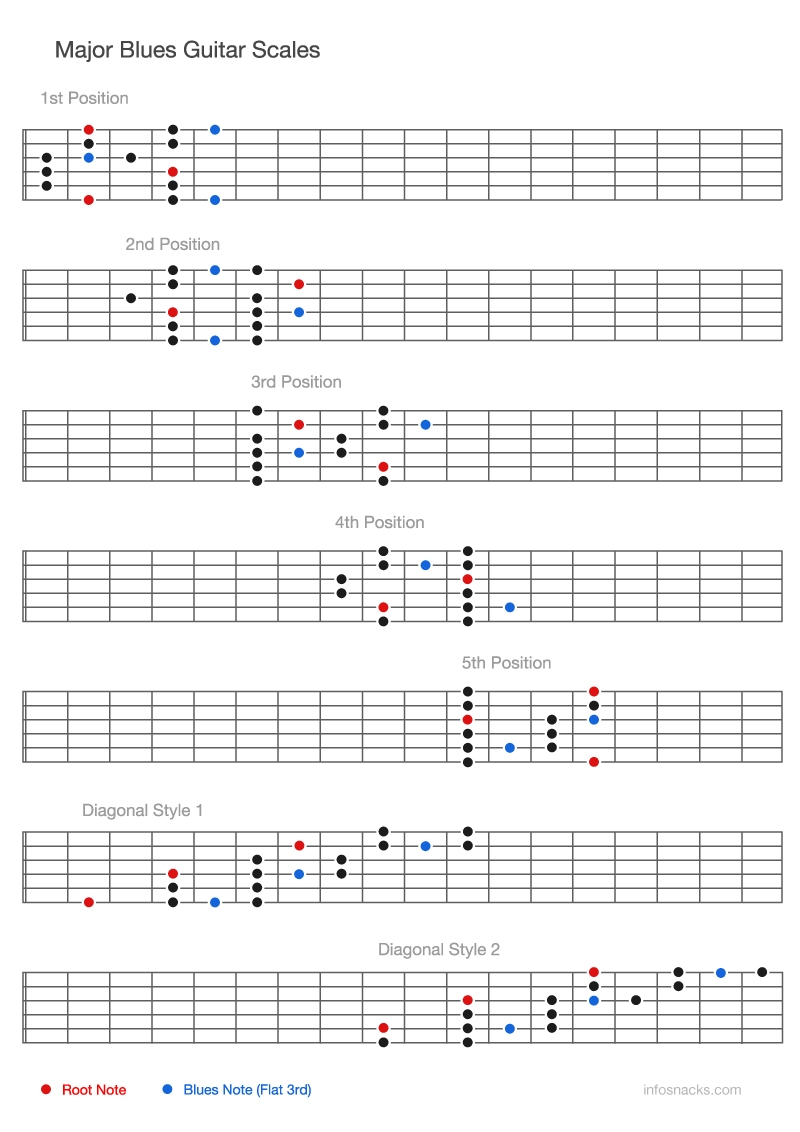Major Blues Guitar Scales
The major blues scale is less common than the minor blues scale, but is still used frequently by guitarists. The major blues scale adds a flat 3rd to the major pentatonic scales. The scale has six notes made up of the 1st, 2nd, flat 3rd, 3rd, 5th and 6th scale degrees.
While the minor blues scale can be played seamlessly over the twelve-bar blues progression, the major blues scales are not so compatible. To play the major blues the guitarist must play the scale patterns below in-key with each chord of the progression. For example in a blues progression in C you can play the C major blues scale over the C7 chord, F major blues over the F7 chord, and G major blues over the G7 chord. This is because the major blues scale has a natural 3rd, which doesn't sound very good when played over the flat 3rd contained in the minor chords of the 12-bar blues progression. This technique of playing the major blues scales over each chord in a progression is often interwoven with playing the minor pentatonic and minor blues scales in the progression's root key.
It can be a bit confusing why the major blues scale adds a flat 3rd, as a flat 3rd is the note that makes a minor triad! The important thing to remember here is the major part of the scale comes from the natural 3rd, which is the major 3rd of a major triad, and the flat 3rd is what gives the scale its blues sound.
The major blues scales, like the pentatonic scales, can also be played diagonally or horizontally on groups of strings.

Comments